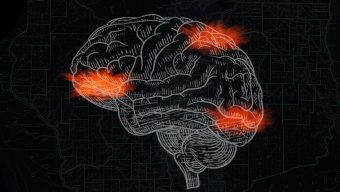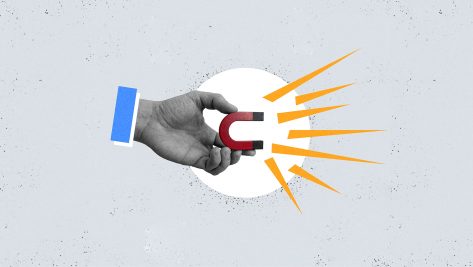Today’s companies are immersed in a new age that demands a “BYOL” mindset—bring your own learning—as a catalyst for innovation, excellence, and a high-performance culture. In today’s complex, volatile, and uncertain environment, organizations are shifting away from business models dominated by the control of assets and towards new models based on the ability to monitor and influence ecosystems. As new roles and situations sprout up, people must understand the context so that they can adapt through lifelong learning.
Lifelong learning means giving people the opportunity to improve the skills and talents that they already use in their work. Business leaders should prioritize this sort of training and set an example by demonstrating that they are constantly renewing their own knowledge. Ideas, skills, and competencies are strategic tools for making an organization competitive. The promotion of learning is therefore a determining factor: it transforms information into acquired knowledge and increases the team’s productivity. Business leaders must serve as designers, guides, and teachers; they are responsible for building an organization where skills are constantly enhanced with the aim of understanding our complex reality, developing a personal and entrepreneurial vision, and improving shared mental models. It is essential to design better learning processes so that employees are equipped to handle critical situations productively.
Effective leaders are now looking for different kinds of talent. In selection processes, cognitive abilities are now given precedence over intellectual and technical skills.
Learning for new types of performance
Fast-paced technological change is transforming the foundations of companies in all sectors. This new environment—which requires greater agility and constant innovation—demands that business models be reformulated. In this new landscape, companies must foster a mindset of continuous improvement by encouraging all employees to assert control over their own learning and take responsibility for their own development. This can be achieved by applying learning paths for the company’s talent. Executives or professionals who wish to develop a specific set of competencies can follow a particular learning path that consists of various short units and focuses on specific capacities. With this approach, both organizations and individuals can gain rapid access to the most innovative knowledge through personalized training.
In addition to technological change and great uncertainty and volatility, companies and individuals are under constant pressure to deliver results. This makes the work environment extraordinarily tough and demanding, with the expectation of solid performance under increasingly tight deadlines. Companies face relentless pressure to meet their growth forecasts; this pressure is felt throughout the organization, from the CEO down.
Various indicators confirm that yesterday’s companies have reached the end of a cycle. In today’s emerging environment, technology is widely available and faster than ever; as a result, the learning paradigm has shifted. Size is less important than it used to be; what matters now is the fast pace of change and economies of speed. Moreover, challenges are arising in the macroenvironment. Governments are becoming more active and political parties are standing up for equality; dialogue between parties is also on the rise, as is dialogue with companies.
Today’s workforce is characterized by the coexistence of multiple generations with different expectations and functions, all collaborating and interacting with their immediate surroundings and their superiors in different ways. This context has given rise to a new sort of professional. It is also clear that companies are becoming more complex. The standard organizations of yesteryear are evolving into three-dimensional structures where people report to a particular business or geographical unit and to various authorities within the company. The issue is less about access to things and more about the ecosystem we inhabit. Finally, capital is being redefined in terms of expectations of remuneration and profit, and also in terms of time.
Making mistakes, taking risks, and persevering in the face of difficulty or uncertainty are also critical elements for success.
Leadership skills and competencies
In the new world that is just coming into focus, effective leaders are now looking for different kinds of talent. Cognitive abilities are now given precedence over intellectual and technical skills, which used to be the centerpiece of the selection process. Business leaders and managerial talent must take note of the real need to develop new leadership skills and abilities. Adaptive capacity and power are of the utmost importance. According to Korn Ferry, jobs are being created and developed at a faster pace than the corresponding competencies. Consequently, there is a pressing need for a new type of leader: someone who is an extremely agile learner and able to adapt on the fly. The work you excel at today is probably very different from the work that will be needed in a few years’ time.
The capacity for success was traditionally measured in terms of intellectual ability, or intelligence quotient (IQ). Later, it became popular to also consider emotional intelligence (EQ), which measures the ability to empathise, work with others, and share. Nowadays, it is essential to consider adaptability quotient (AQ) in the selection and development of talent. AQ measures a combination of cognitive skills that determine people’s ability to process information, memorize, and solve problems; their learning mindset; their capacity to overcome the fear of new situations and develop curiosity; and emotional traits associated with empathy and sympathy. Another key trait is the ability to fall down and get back up again. Making mistakes, taking risks, and persevering in the face of difficulty or uncertainty—emotional qualities perhaps somewhat different from those valued previously—are also critical elements for success.
In any type of work, the first thing to look for is cognitive ability, which is based not on intellectual qualities but on the capacity to learn. This means having the ability to process on the fly: the important thing is not necessarily to learn, but to be able to learn. The only substantial competitive and effective advantage over one’s competitors is the ability to learn faster than they do. In addition to intellectual and emotional qualities, there is a third element that leaders and companies should also possess: adaptive capacity. This is essential because we all form part of the same ecosystem and we must learn together.
A fundamental element of adaptive capacity is the desire to keep learning, to have a mindset that makes you unafraid to not know things. With such a mindset, you develop curiosity: learning about new things becomes your default mode of operation. People don’t stop learning when they reach a particular age or when they begin a certain job. In Europe, nearly half of the population is over 50 years old. These people must develop the ability to learn in a work environment where results must be delivered in the shortest possible time. Under this sort of pressure, lifelong learning is a must.
Believe it or not, learning is all around us, but it requires practice, dedication, and guidance. Knowledge and learning can occur anywhere and in any situation, so you must pick and choose the most appropriate information in order to shape your own knowledge. In a business with new premises or rules, you must learn how to conduct yourself and cope with new circumstances, problems, and modes of reasoning that you may not always be prepared for.
In Europe, nearly half of the population is over 50 years old. These people must develop the ability to learn in a work environment where results must be delivered in the shortest possible time.
Parallels between BYOL and BYOD
There are parallels between BYOL (bring your own learning) and BYOD (bring your own device). BYOD is a trend that started around 2007, when many professionals started to use laptops and phones for personal and private matters. Today, 95% of employees use at least one mobile device for work. Current forecasts suggest that companies will start requiring employees to bring their own device to work. Besides being preferable in the eyes of the employer, BYOD policies have various benefits, including higher employee productivity and morale.
BYOD has much in common with the BYOL concept in the business and executive world. Before the year 2000, 16% of professionals had been in their job for less than two years; by 2010, this percentage had risen to 51%. The question is how to invest in training when everything is changing at such a dizzying pace and rates of job mobility and staff turnover are on the rise. Freelancers account for 15% of the global workforce; in the United States, the figure is 35%. These percentages are expected to increase significantly all over the world from now until 2030. The key is to empower the professionals who make up a company by providing tools and motivation to ensure that they get the best possible training.
Because learning happens everywhere (BYOL), executives must consider various imperatives that should be applied in every work environment. It is necessary to develop the capacity for adaptation—or AQ—with a clear orientation towards a learning mindset. It is not a matter of putting skills and competencies into practice or reflecting one’s individual knowledge. Instead, everyone needs to pool their skills and competencies and put them into practice together. Workers also need to be empowered and encouraged. They should be allowed to control their own competencies with the aim of delivering satisfactory results.
Industries and companies are becoming increasingly technological. Through the use of specific programs, tools, methods, and software, they are becoming much more open and better integrated into the business ecosystem, as well as more efficient at distinguishing good learning from bad learning. Each worker’s individual successes should be recognized, rewarded, and celebrated, regardless of whether they come from individual or collective learning.
© IE Insights.











